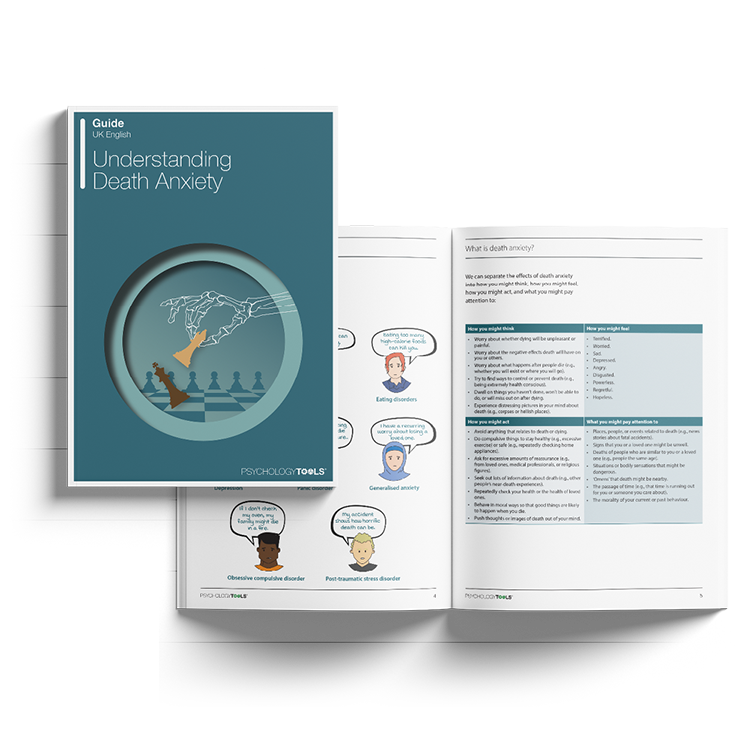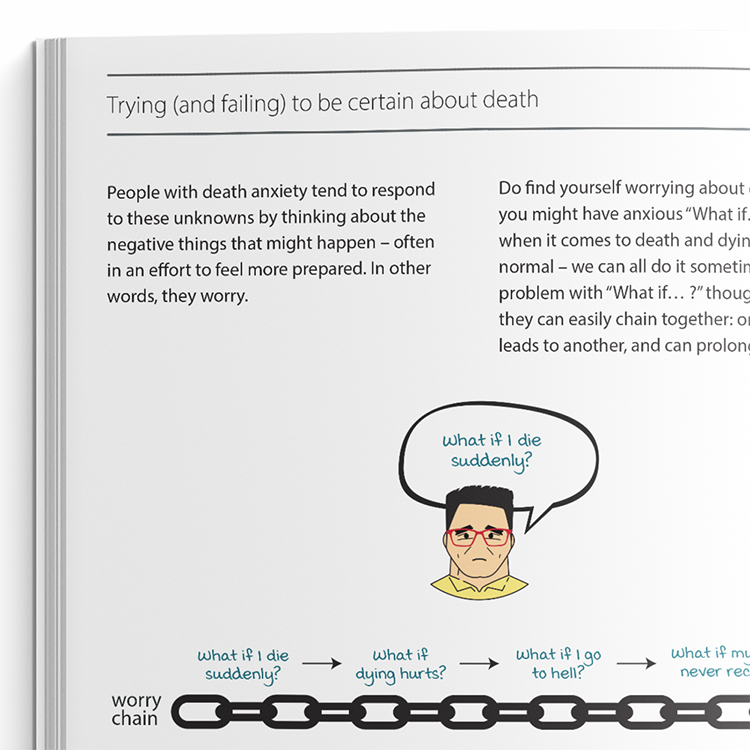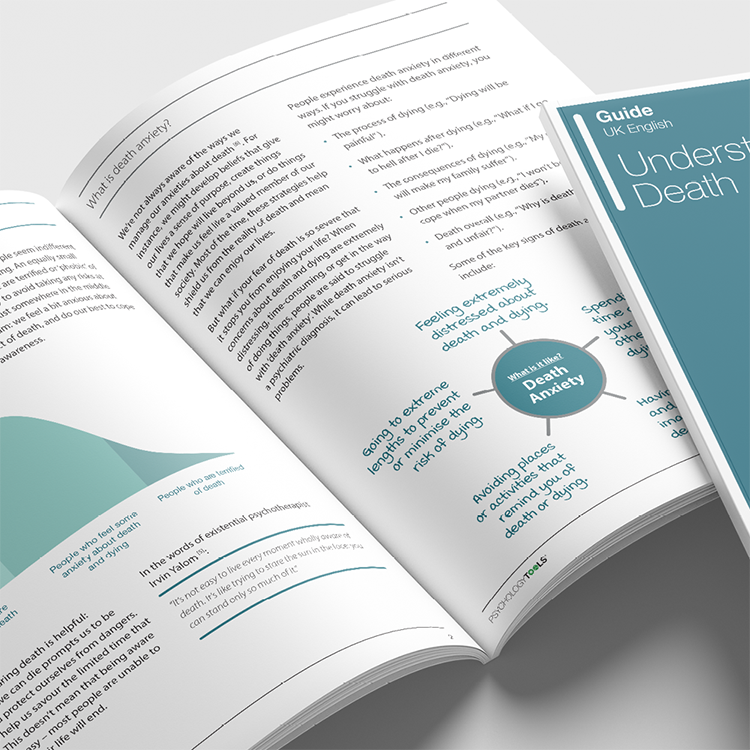Guide (PDF)
A psychoeducational guide. Typically containing elements of skills development.
An accessible and informative guide to understanding death anxiety, written specifically for clients.

A psychoeducational guide. Typically containing elements of skills development.
To use this feature you must be signed in to an active account on the Advanced or Complete plans.

Our ‘Understanding…’ series is a collection of psychoeducation guides for common mental health conditions. Friendly and explanatory, they are comprehensive sources of information for your clients. Concepts are explained in an easily digestible way, with plenty of case examples and accessible diagrams. Understanding Death Anxiety is designed to help clients with death anxiety to understand more about their condition.
This guide aims to help clients learn more about death anxiety. It explains what death anxiety is, what the common symptoms are, and effective ways to address it, such as cognitive behavioral therapy (CBT).
Designed to help clients understand and learn more about death anxiety.
Identify clients who may be experiencing death anxiety.
Provide the guide to clients who could benefit from it.
Use the content to inform clients about death anxiety and help normalize their experiences.
Discuss the client’s personal experience with death anxiety.
Plan treatment with the client or direct them to other sources of help and support.
Worries about death - whether one's own or that of a loved one - are a normal part of life. However, when thoughts about death or dying become extremely distressing, time-consuming, or interfere with important activities, it may be a sign of death anxiety.
Death anxiety (also referred to as thanatophobia) is a common fear that can affect individuals across the lifespan. Research indicates that up to 10% of people experience death anxiety, with approximately 3% experiencing it at an intense level. Clients' concerns may center on their own death, the death of others, the process of dying, or questions about what happens after death.
Death anxiety can contribute to significant mental health difficulties and impair daily functioning. It is also implicated in a range of other psychological disorders, including anxiety disorders (such as health anxiety or obsessive-compulsive disorder), depression, and eating disorders. Encouragingly, cognitive behavioral therapy (CBT) has been shown to be an effective treatment for death anxiety.

Just enter your name and email address, and we'll send you Understanding Death Anxiety (English US) straight to your inbox. You'll also receive occasional product update emails wth evidence-based tools, clinical resources, and the latest psychological research.
Working...
This site uses strictly necessary cookies to function. We do not use cookies for analytics, marketing, or tracking purposes. By clicking “OK”, you agree to the use of these essential cookies. Read our Cookie Policy